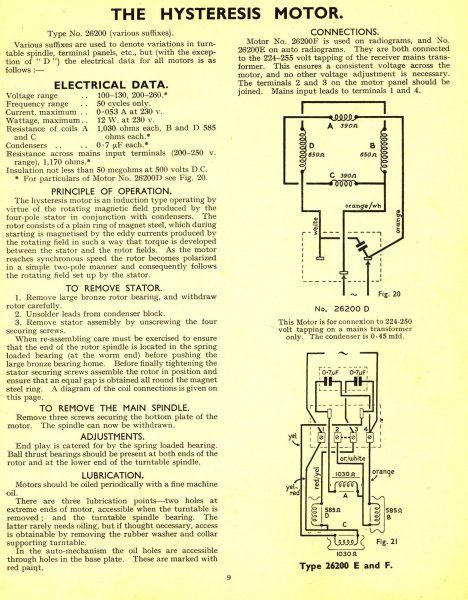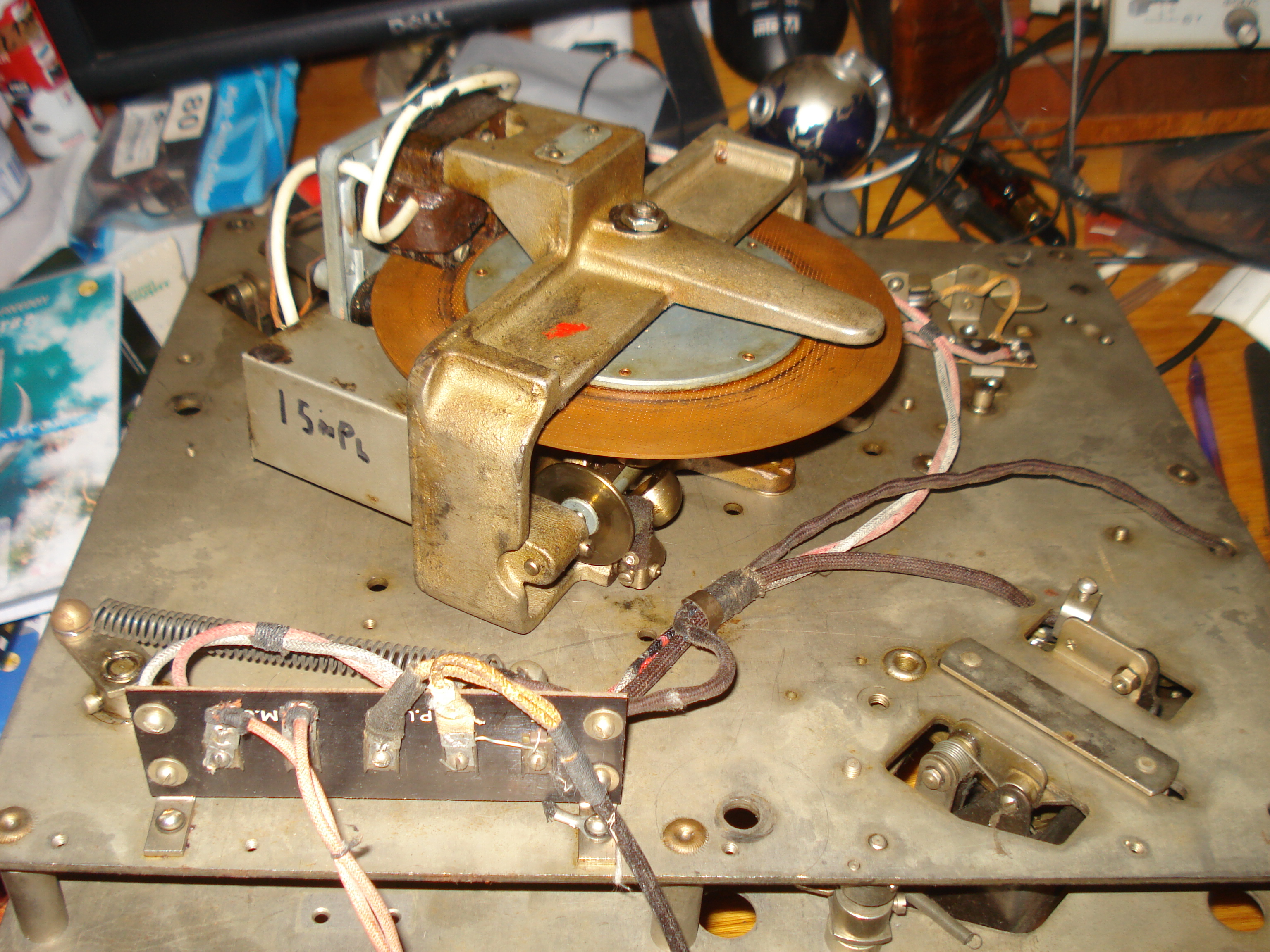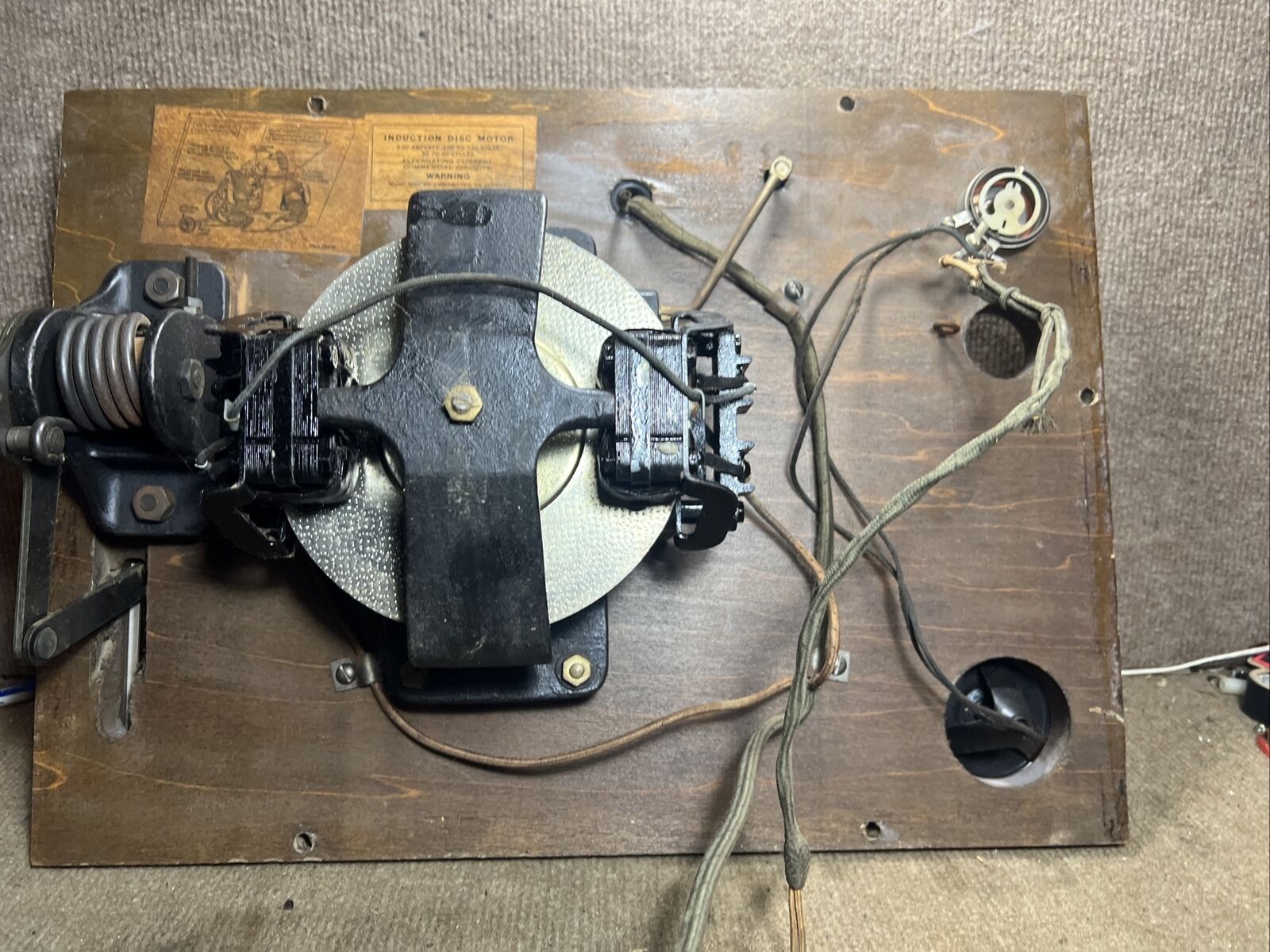The list of my radio & TV collection!
Posts: 15,280
Threads: 531
Joined: Oct 2011
City: Jackson, NJ
Pete,
one correction: Hysteresis motor is synchronous. It does not need starter winding, and has constant toruqe between the start and synch speed when it "catches up" with the stator field.
They are used where very high accuracy of following the field is required.
People who do not drink, do not smoke, do not eat red meat will one day feel really stupid lying there and dying from nothing.
Posts: 555
Threads: 20
Joined: Nov 2014
City: Svalyava Transkarpatia
State, Province, Country: Ukraine
It's amazing. And then what is the function of these windings? This is a diagram of the engine of a Marconi gramophone, but a different model than mine ...

Here, not even three, but four windings and two starting windings are switched on through the phase shift capacitor. Have I misunderstood their function?
PS. And by the way, this engine has a centrifugal mechanical speed regulator. I have seen this only on old pre-war electrogramophones

Old Tube Radio Online Museum / Музей ретро радіо
https://www.youtube.com/user/RadioSvit?d...lymer=true
Sincerely Peter
З повагою Петро
(This post was last modified: 04-02-2024, 07:30 AM by RadioSvit.)
Posts: 15,280
Threads: 531
Joined: Oct 2011
City: Jackson, NJ
A hysteresis motor with 4 poles (2 pairs) will have at 50Hz the speed (synchronous) of 25 rev/sec or 1500 rpm.
You have 4 poles, so it will be that.
>>four windings and two starting windings are switched on through the phase shift capacitor.
Where do you see 6 windings? I see 4 altogether.
As for "not even three, but four windings", with synchronous hyst motors the windings in stator come in pairs. The speed will be your AC frequency divided by the number of pair (with 4 windings you divide by two, hence 25 rps or 1500 rpm).
True synch motor does not need speed regulator as it cannot possibly exceed the synch speed, it can only achieve it and lock to it.
The centrifugal regulator in asynch motors is not the speed regulator but the "start capacitor switch". It does not regulat speed.
If you do have starting cap and the centrifugal switch, then maybe it is not a hysteresis motor after all?
The synch motor simply does not need anythingm, winding or capacitor, to start, as it develops torque right from the get-go, amd the torque does not change with the speed as it catches up with the field rotation.
People who do not drink, do not smoke, do not eat red meat will one day feel really stupid lying there and dying from nothing.
Posts: 555
Threads: 20
Joined: Nov 2014
City: Svalyava Transkarpatia
State, Province, Country: Ukraine
Quote: >>four windings and two starting windings are switched on through the phase shift capacitor.
Michael, this is an example of an incorrect Google translation, I was talking about four windings, two of which are starting.
Майкл, это пример некорректного гугло перевода, я говорил о четырех обмотках, две из которых являются пусковыми.
Quote: True synch motor does not need speed regulator as it cannot possibly exceed the synch speed, it can only achieve it and lock to it.
The centrifugal regulator in asynch motors is not the speed regulator but the "start capacitor switch". It does not regulat speed.
If you do have starting cap and the centrifugal switch, then maybe it is not a hysteresis motor after all?
The synch motor simply does not need anythingm, winding or capacitor, to start, as it develops torque right from the get-go, amd the torque does not change with the speed as it catches up with the field rotation.
Michael, your arguments are very logical, but you completely confused me with them.  The fact that this motor is hysteresis was told to me by the owners of similar electrogramophones on the English forum UK Vintage Radio Repair and Restoration. And what is very interesting, there is a mechanical regulator of the disk rotation speed. Did I understand correctly that in this case it is definitely not a synchronous motor, and maybe not even a hysteretic one, but most likely an asynchronous one?
But there is a disc like in hysteresis motors. This is a mystery. 
Old Tube Radio Online Museum / Музей ретро радіо
https://www.youtube.com/user/RadioSvit?d...lymer=true
Sincerely Peter
З повагою Петро
Posts: 15,280
Threads: 531
Joined: Oct 2011
City: Jackson, NJ
Got it, this darn Google.
Well, you could do a search on the motor you have, maybe even photograph and feed it to Google.
When you say "centrifugal regulator", what kind? Switch? Or the old style like those balls on steam engine that change the gear ratio, purely mechanical?
Synch, especially hysteresis, motor has no use for it, as any mechanical speed regulation would fight the rotating EM field. I am not sure how it would work.
The synch motors are used in Variable Speed drives where their speed is regulated by the field frequency. Regulating it mechanically is, well, kinda wrong.
If the motor runs a gearbox, where the regulator changes the gear ratio, then yes, that is quite possible.
People who do not drink, do not smoke, do not eat red meat will one day feel really stupid lying there and dying from nothing.
Posts: 555
Threads: 20
Joined: Nov 2014
City: Svalyava Transkarpatia
State, Province, Country: Ukraine
Old Tube Radio Online Museum / Музей ретро радіо
https://www.youtube.com/user/RadioSvit?d...lymer=true
Sincerely Peter
З повагою Петро
(This post was last modified: 04-04-2024, 04:36 AM by RadioSvit.)
Posts: 15,280
Threads: 531
Joined: Oct 2011
City: Jackson, NJ
SO, was I right when I theorized that it was 2-ball regulator moving gears to change the gear ratio?
I cxannot quite tell it fom the photos, but sure looks like it.
Yes that is possible.
What is the rotor made of? Copper?
If it is, what yoou have is likely the induction disc motor. Very much the same type that is used in house electric meters (or used to be used).
It is based on rotating magnetic field and eddy currents in the disc.
A similar one:
https://www.ebay.ca/itm/134565999569
https://www.ebay.com/itm/364371922804

The same principle also exists in disc relays.
Basically the pole and the disc produce zero torque, but then you could divide the pole in half, and make a shorted turn around one half, thus making the torque non-zero.
https://www.nprcet.org/site/download?fil...otesu2.pdf
This is the article; find the "Induction disc relay" and "Pole shading method of producing torque"
People who do not drink, do not smoke, do not eat red meat will one day feel really stupid lying there and dying from nothing.
(This post was last modified: 04-04-2024, 09:21 PM by morzh.)
Users browsing this thread: 1 Guest(s)
|



